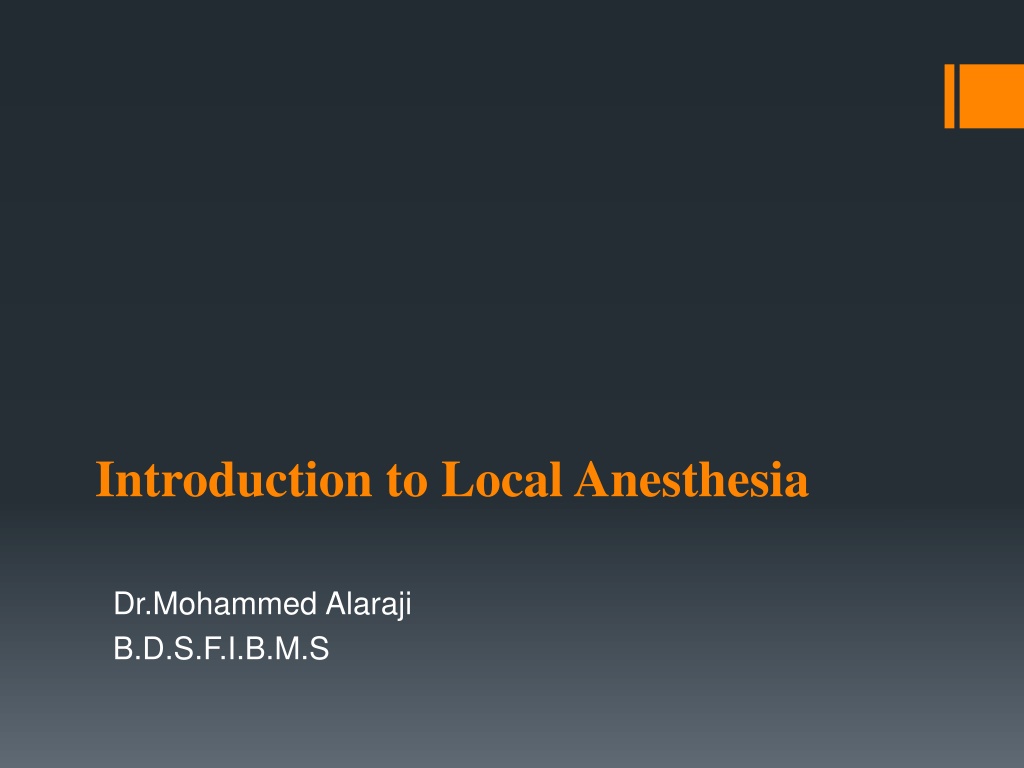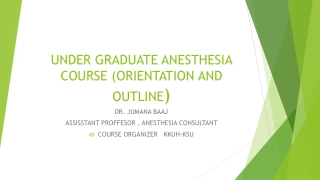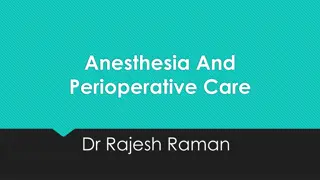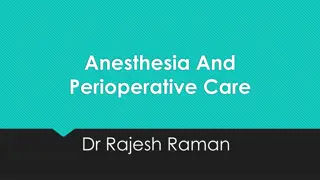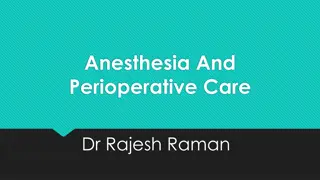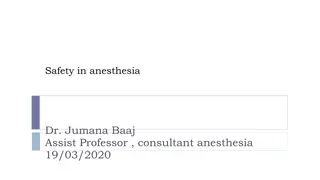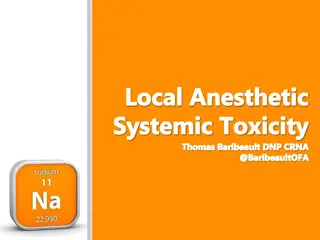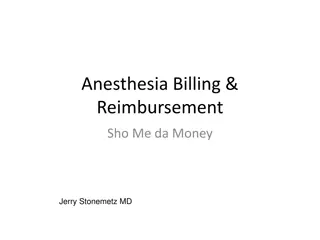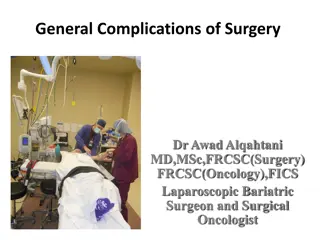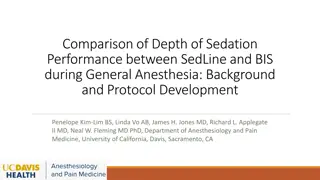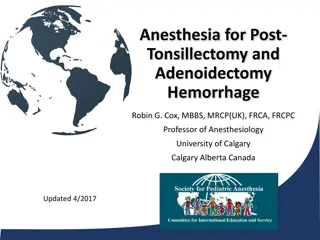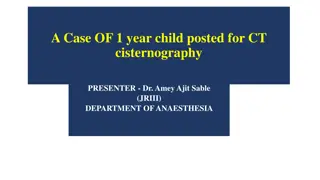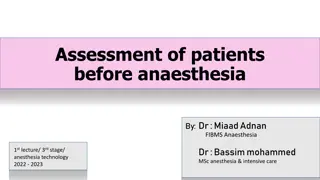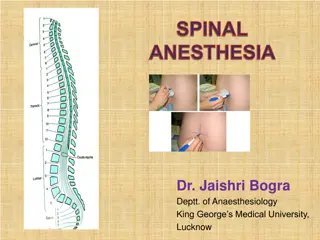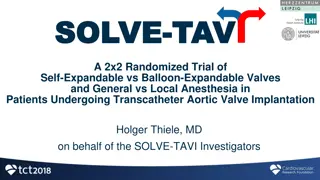Local Anesthesia: Definition, Features, and Uses
Local anesthesia plays a crucial role in dental procedures by providing pain relief without inducing loss of consciousness. This article explores the definition of local anesthesia, its key features, desirable properties of local anesthetics, and common uses or indications in dentistry. Understanding these aspects is essential for both dental professionals and patients seeking painless dental treatments.
Download Presentation

Please find below an Image/Link to download the presentation.
The content on the website is provided AS IS for your information and personal use only. It may not be sold, licensed, or shared on other websites without obtaining consent from the author. Download presentation by click this link. If you encounter any issues during the download, it is possible that the publisher has removed the file from their server.
E N D
Presentation Transcript
Introduction to Local Anesthesia Dr.Mohammed Alaraji B.D.S.F.I.B.M.S
Many dental procedures, such as tooth extraction, are both painful and prolonged and should be performed without pain by using a local anesthesia.
Local anesthesia Definition "loss of sensation in a circumscribed area of the body caused by inhibition of the conduction process in the peripheral nerves".
An important feature of local anesthesia is that it produces this loss of sensation without inducing loss of consciousness. In this one major area, local anesthesia differs dramatically from general anesthesia.
Terminology Pain: According to the (WHO) pain is defined as an "unpleasant sensation that occurs from imminent tissue damage . Analgesia: loss of pain. Anesthesia: loss of sensation (loss of pain and touch sensation). In dentistry, local anesthesia is used to permit the performance of surgery or other painful procedures with no pain. Paresthesia: altered sensation (tingling), such as when a local anesthesia is starting to work or its effect is wearing off. Or when a damaged nerve is regenerated. The effect of local anesthetics on nerve fiber has been shown to be dependent on: 1. The duration of exposure of local anesthesia. 2. Concentration. 3. Volume of the solution. Relative analgesia: is a sedation technique in which the patient remains conscious but mental relaxation is induced by inhalation of a mixture of nitrous oxide and oxygen.
Properties deemed most desirable for a local anesthetic It should not be irritating to the tissue to which it is applied. It should not cause any permanent alteration of nerve structure. Its systemic toxicity should be low. The time of onset of anesthesia should be as short as possible. The duration of action must be long enough to permit completion of the procedure. It should be relatively free from producing allergic reactions. It should be sterile.
A. Diagnostic: example is a patient with myofacial pain who is convinced that an upper tooth is causing the problem; LA may help this patient and the surgeon in this situation to eliminate the tooth as the cause of pain and may thus avoid unnecessary treatment.
B. Therapeutic: LA can constitute part of a treatment for painful conditions, for example, the use of block technique to eliminate the pain of dry socket. Blocks of the inferior alveolar nerve, mental nerve or infraorbital nerve can also be used for the treatment of trigeminal neuralgia when pain breakthrough.
C. Preoperative: The provision of pain-free operation is by far the most common use of LA providing an effective and safe method for almost all outpatient dentoalveolar surgical procedures. It can in conjunction with sedation techniques allows more difficult procedures to be carried out without the additional risks of general anesthesia and this is particularly of value in patients with significant cardiovascular or airway diseases.
D. Adjunct to General Anesthesia: LA is also given to patients undergoing oral and maxillofacial surgery under general anesthesia this serves the following purposes: 1. It reduces the depth of general anesthesia needed. 2. It provides local homeostasis to the operative site. 3. Provides immediate postoperative analgesia.
E. Postoperative After surgery with either local or general anesthesia the continuous effect of the anesthesia is the most beneficial way of reducing a patient's discomfort, it helps to reduce or even eliminate the need for a stronger systemic analgesic.
Contraindications of local anesthesia 1-Absolute contraindications: A. History of allergy to local anesthetic agent Local anesthetic agents belong to the same chemical group should not be used. However, LA agents in the different chemical group can be used. For example, if the patient gives a history of allergy to an amide local anesthetic agent, an ester LAagent should be used. B. History of allergy to other constituents of the local anesthetic solution When the patient has a history of allergy to any of the constituents of the LA solution, it should be avoided, a different type of solution should be used.
2- Relative contraindications: A. Uncooperative patient. B. Presence of acute inflammation or suppurative infection at the site of injection, to avoid the spread of infection (with the passages of the needle) from the abscess area to the deeper tissue. C. Patient with a significant medical disease such as cardiovascular disease, hepatic dysfunction, renal dysfunction, clinical hyperthyroidism, etc. D. Major surgical procedures (needs to be done under general anesthesia).
Advantages of local anesthesia 1. Less expensive than general anesthesia (GA). 2. No special preparation of the patient is needed as in GA. 3. No complicated apparatus is needed. 4. Less complication rate than GA. 5. The patient remains awake with no need for aftercare. 6. Can be used if GA is contraindicated (the patient is unfit for GA). 7. Anesthetist and other additional trained personnel are not required. 8. The technique is not difficult to master.
